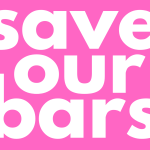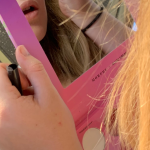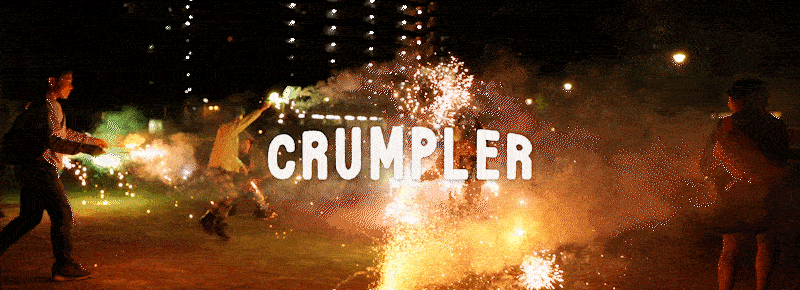The down-low on the fibres that won’t break down.
Out of sight, out of mind (but not really). A 2016 study by the Ellen MacArthur Foundation tells us that by 2050, there will be more plastic in the ocean than fish. What exactly does this mean? Well, our plastic waste is the “equivalent to dumping the contents of one garbage truck into the ocean every minute” (Ellen MacArthur Foundation, 2016). And out of all of this plastic, only 9%of it has ever been recycled. A large portion of this plastic pollution can be classified as“microplastics”.
What are microplastics, exactly? They’re small pieces of plastic that measure 5mm or less in size. Microplastics appear in a number of ways. When larger pieces of plastic start to breakdown in nature, it breaks up into smaller and smaller pieces until eventually you are left with millions of pieces of microplastic. Synthetic textiles such as polyester are also made from plastic, and these textiles shed microplastics when washed. Dr Mark Browne first made these discoveries and estimated that 35% of microplastics in the ocean are released through washing(Ellen MacArthur Foundation, 2017). These pieces of plastic are often too small to be picked up by wastewater treatments, so they’re headed straight for the ocean. Scientists estimate that approximately 80% of all plastic pollution in the ocean is made up of microplastics, and they are being ingested by fish and other wildlife, which are in turn ingested by many of us. It’s too early to know the effects of ingesting plastic on humans, but one thing is certain: sick fish, sick people.
There are some fashion brands doing fantastic things in this space. They are trying to tackle the plastic problem by recycling plastic fibres and reweaving them into new textiles. Recycled plastics have been a subject of focus for outerwear brands for some time, with Patagonia usingPET from discarded water bottles since 1993. Now, this tech is spilling into the mainstream and has been picked up by sportswear giants Adidas and Nike, as well as activewear brandsGirlfriend Collective and P.E Nation. As commendable as these tech innovations are, it can’t be ignored that recycled PET isn’t the magic solution to this waste problem. In reality, it is just one improvement in a chain of unsustainable practices.
Brands like Patagonia and Girlfriend Collective bring attention to the fact that recycled plastic fibres still pose challenges, and offer products for people to minimise their impact. Be sure to look beyond the marketing when coming across recycled materials; is this company realistic about the impact of plastic, even when recycled?
The fashion industry needs an overhaul. We need to embrace a circular economy where everything is used and nothing is discarded. Parley For The Oceans (the company that supplies Adidas with their collected ocean plastics) uses the framework AIR:
- Avoid plastic wherever possible
- Intercept plastic waste
- Redesign the material itself
In terms of corporate action, the Ellen MacArthur Foundation reports that over 400 corporations have signed the New Plastics Economy Global Commitment. While these companies are not exclusively fashion or textiles, this list names 5 of the top 15 global retailers, including Walmart and Target. The Ellen MacArthur Foundation also has a fashion-specific global movement, dubbed “Make Fashion Circular”. Publicly listed participants include Burberry, H&M Group, Stella McCartney, and Kering.
How can we help?
At Home:
Girlfriend Collective, as well as being producers of some fantastic activewear, also sell washing machine filter on their site designed to capture microplastics. The filter is listed at$45USD, which converts to approximately $67AUD. Instead of picking up an outfit on sale while wandering aimlessly through the shops, consider putting your cash towards this instead. Another alternative to the washing machine filter is the Guppyfriend washing bag, which collects microfibres inside the bag during washing. As of yet, there is no appropriate way to properly recycle microplastics, but diverting them to landfill is significantly less harmful than allowing them to spread to our waterways and oceans.
Out there:
- Sign petitions in your local area to encourage policy change that will address waste management and advocate for a move to a circular economy, where nothing is wasted.
- Spread the word!
- Take 3 For The Sea: exactly what it sounds like. Take 3 pieces of rubbish with you every time you leave the beach. Check out the Take 3 website here to read more about this global movement.
Recycling: “A great place to start, but a bad place to stop,” says Tim Silverwood, CEO of Take 3 For The Sea. For many of us, recycling is the go-to step with many of our garments and household items. However, if we want to make real changes to save our planet, it needs to be the last phase of our garments’ life cycle.
Words by Shaneen Page.








